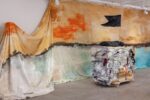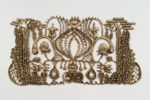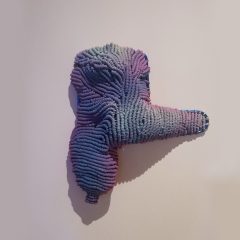In a scrap-wood cabin with everything homemade, from bed to table, chairs, rug and tableware, you would not expect to find a somber elegance. But, the exploded hobo-aesthetic cabin on view at Fleisher-Ollman until Jan. 30 sprawls across the gallery space, more beautiful, spare, and quiet than any Swedish designer showroom.

House Beautiful but subdued
House of Escaping Forms is a project of the Los Angeles-based collaborating couple, Chris Johanson and Johanna Jackson, who actually live in a hilltop abode populated, of necessity and by choice, with their functional, found-object creations and hand-made objects. I thought of them as I paced through the stage-set-like rooms of the House, whose objects seem so personal and private. But I also thought of myself, considering the possibilities of that table, those cast-glass tumblers (especially those tumblers!) and the cushions, as possible new members of my own household. What can I say, I was shopping.
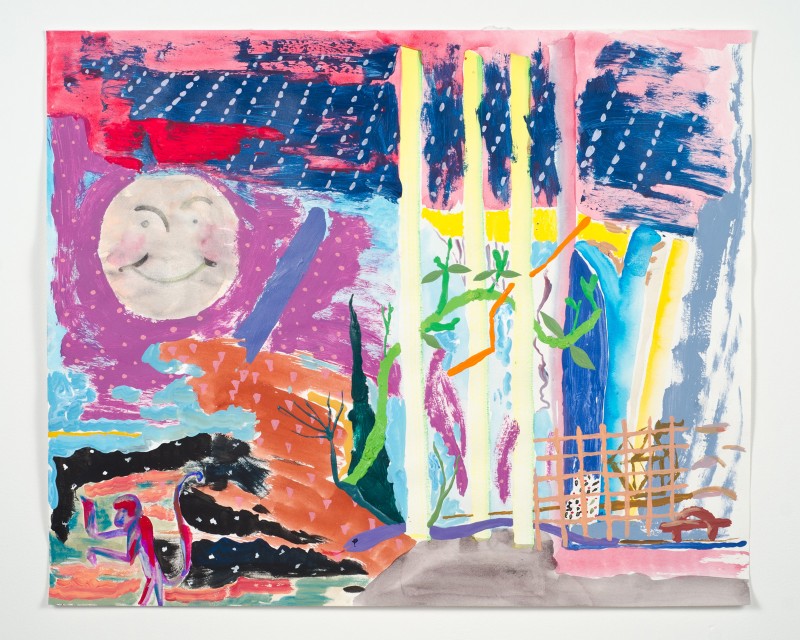
14 1/2 x 17 inches, JOJA 11 Credit: Courtesy the artists and Fleisher/Ollman. Photo: Claire Iltis
A way of life
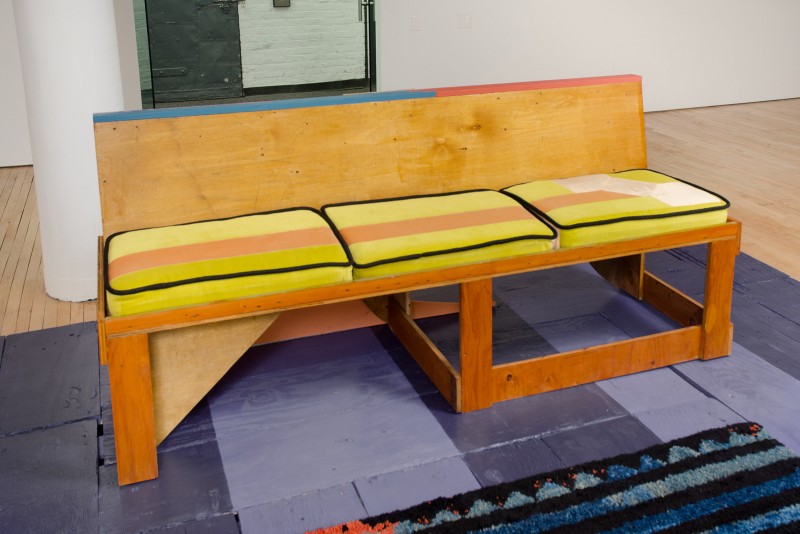
I read a lot of honesty into this installation, a laying bare of a way of life shared by the artists, who juggle making art, making a living, and remaining true to an anti-establishment philosophy they embrace. I found the contradiction at the heart of House — anti-establishment objects, on sale in a gallery — not ironic or hypocritical, but poignant. The entire living arrangement, with colors in a predominantly subdued palette of purples, grays and browns — moments of bright color reserved mostly for the paintings on the walls — is out of sync with today’s plastic-laminate aesthetic, whose hyper-digitized designs flatten birds and flowers into emoji patterns, nature tamed that we can live with.
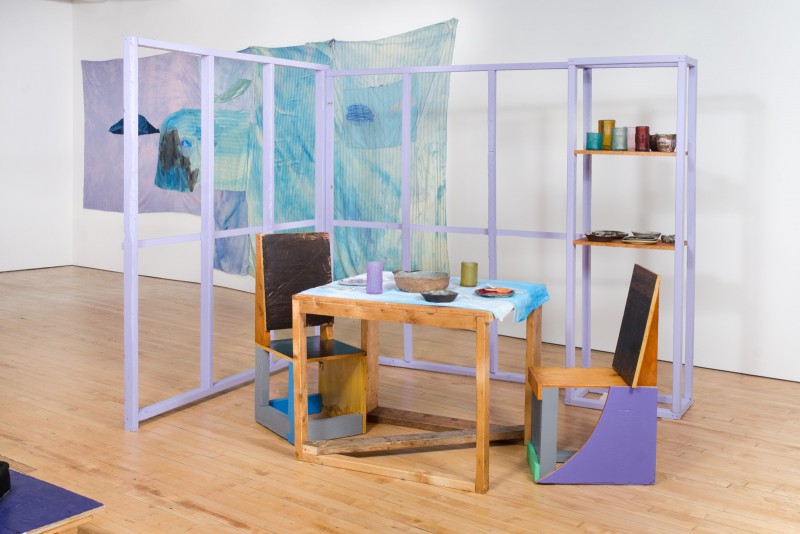
Rather, Johanson and Jackson’s aesthetic is design from the inside out, made by internalized knowledge of living, whose recipes come from doing it yourself and not by looking over everyone else’s digital shoulder to find colors, motifs and ideas.
Take the table, for instance, a small (30x37x32”) rectangular cubic that Cezanne’s card players would be quite at home sitting around. This is a one-off, and defies categorization, except maybe to say it’s in the category “tailor-made for two.”
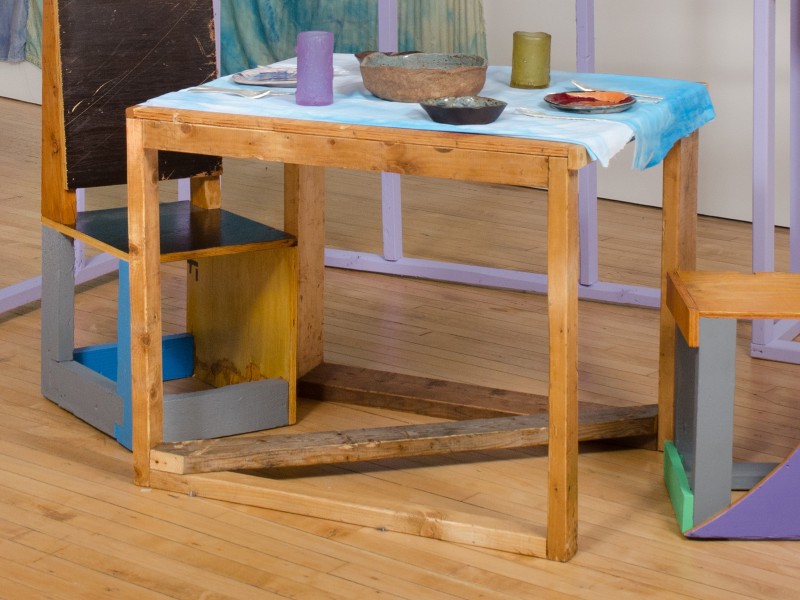
The number two
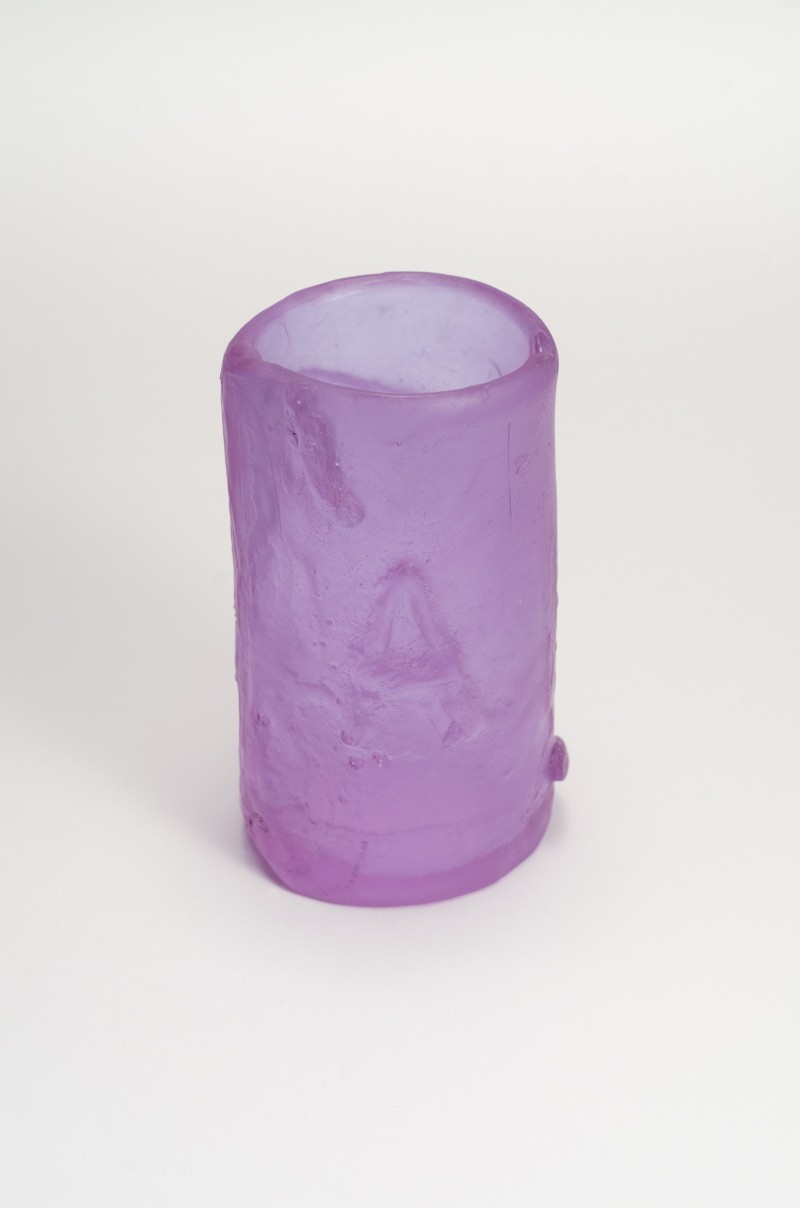
Glass vessel (purple), 2015
cast glass
5 3/4 x 3 1/2 inches
JOJA 7
Credit: Courtesy the artists and Fleisher/Ollman. Photo: Claire Iltis
It’s the self-containment of the “two” that attacks the heart. A table set for two is small, and poignant, unless you’re talking about romantic dining at Parc. The House‘s small table accentuates the poignancy of “the loneliest number since the number one.” In fact, the table, more than any other object in House, connotes the specificity of a universe of two that I cannot insert myself into.
Chris Johanson has showed with Fleisher-Ollman previously and curated the exhibition Introspection/Retrospection at the gallery in sumner, 2011. In 2001, he was featured in the East Meets West exhibit at ICA, which was organized by Alex Baker, then at ICA, now Fleisher-Ollman’s director. In 2014, in the exhibit Energy That is All Around Us, at Grey Art Gallery, NYU, a group exhibit of the so-called “Mission School” artists of 1990’s San Francisco, I first saw the collaborative furniture of Johanson and Jackson. It made a big impression, the scrap-made desk and upholstered chairs – although in that setting the furniture didn’t encapsulate the personal as this exhibit does.
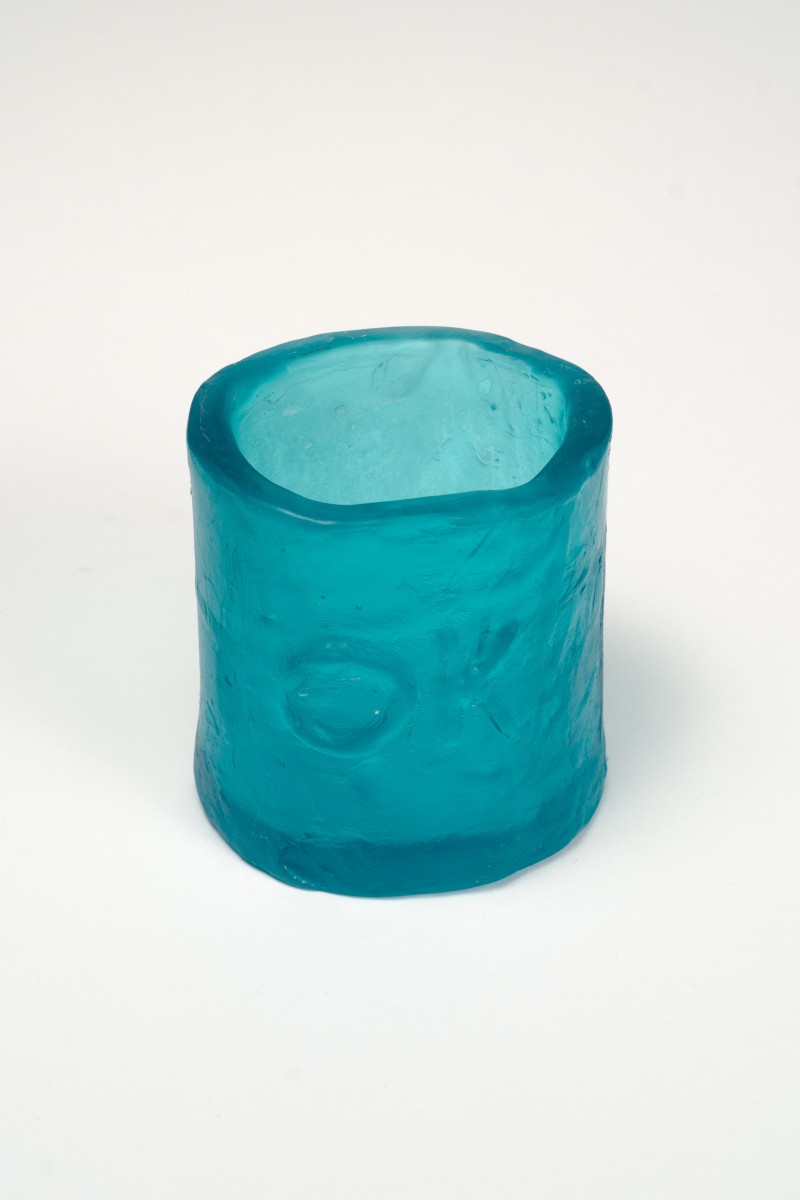
House is not at all Tracy Emin’s bed, nor is it Mark Manders’ Self Portrait as a Building, but Johanson and Jackson’s House is a younger cousin, revealing and concealing of the artist/makers.
You could take the installation as specimens — of a time and place and a community of two people (and a dog). But you could also take it as a stage set of rooms for a performance by two people (and a dog). Either way, House’s recycle-rama of furnishings reminds us that time flies, and that community matters, even or especially a community of two.
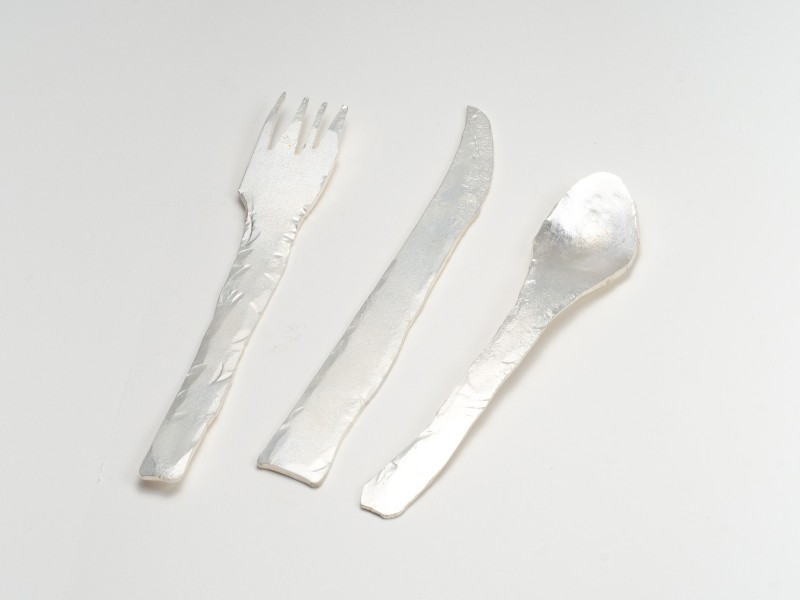
A word about found materials and art
Many artists use found or recycled material in their art. For example, the Dufalas, who also are represented by F-O Gallery and who facilitated, via RAIR, the scrap lumber in this show. Recycled materials speak loudly of their second-handed nature, and it’s hard for art to rise above the materials’ connotations (discarded, abandoned, broken). The Dufalas’ work is humorous, and humor will lead the way in transcending the inherent downer of the used materials. House, which does not use humor, neither transcends nor gets subsumed by its raw materials. Rather, it seems that materials and content are wed in a perfect kind of way, giving dignity and a little sadness to the lives of the discards and to the lives of the two people (and dog) who choose to live together, imperfections and all.
Chris Johanson and Johanna Jackson, House of Escaping Forms, to Jan. 30, 2016. Fleisher-Ollman Gallery www.fleisherollman.com



